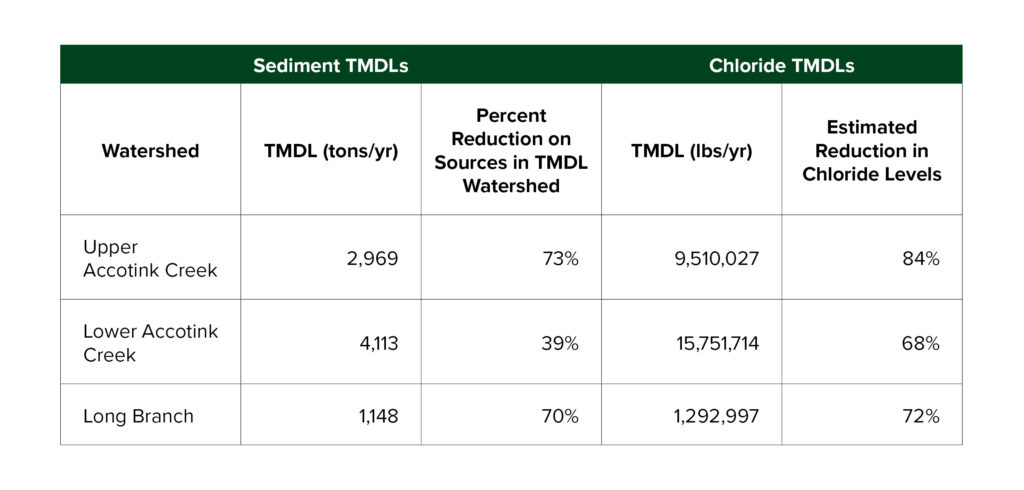New TMDLs for Accotink Watershed: Sediment and Chloride
To address water quality concerns within the Accotink watershed, the Virginia Department of Environmental Quality (DEQ) presented a PowerPoint of the draft Total Maximum Daily Loads (TMDLs) to reduce pollutant sources from sediment and chloride levels. TMDLs determine the maximum amount of a pollutant that a stream can receive while still maintaining its water quality standards. While sediment TMDLs are common, this will be the first chloride TMDL in Virginia and could have widespread implications for the Virginia Department of Transportation, commercial property managers, homeowner’s associations, and individual homeowners as the primary source of chloride is road salt in the winter.
For the purposes of these TMDLs, DEQ divided the Accotink watershed into three sub-watersheds; the Upper Accotink Creek, the Lower Accotink Creek, and Long Branch. DEQ coordinated with the Interstate Commission on the Potomac River Basin (ICPRB) and local partners on the Technical Advisory Committee (TAC) in order to define the maximum amount of sediment and chloride that streams can receive and still meet water quality standards. The resulting amounts are provided in the TMDL tables below for each sub-watershed.

What Does This Mean For You?
Upon final approval, these TMDLs will be incorporated into point source permits (e.g. Municipal Separate Storm Sewer Systems (MS4) permits) that set conditions and limits on the allowable release of pollutants. Additionally, voluntary actions will be encouraged through the development of an implementation plan that highlights best management practices (BMPs) that will help reduce pollutant loads from nonpoint sources that do not require a formal permit.
The chloride TMDLs have the potential to affect average homeowners and commercial property managers as they will limit the usage of salt to treat roads and sidewalks in the winter. Approximately 24% of chloride application comes from non-permitted uses by private property owners. Chloride levels typically spike after winter storm events. DEQ intends to develop a Accotink Creek Salt Management Strategy (SaMS) to help with the implementation of this TMDL as well as to address potential safety concerns and create BMPs for the application of salt during winter weather. During the public input sessions, DEQ emphasized that public safety will not be compromised by implementing this TMDL. The goal is to utilize “smart salting” BMPs that are safe, but more efficient than current salting and deicing practices.
What Is Next?
Currently, these TMDLs for the Accotink watershed are in the draft stage. However, the public comment period ended on July 21, 2017. DEQ and the ICPRB are now working to address the public comments. The U.S. Environmental Protection Agency (EPA) will then conduct a provisional review and present the TMDLs to the State Water Control Board (SWCB) later this year or early 2018. After receiving SWCB approval, the EPA will conduct a final review and the TMDLs will be incorporated into point source permits as part of the next permit cycle. If you have any questions regarding these proposed TMDLs, please reach out to the contacts below.
